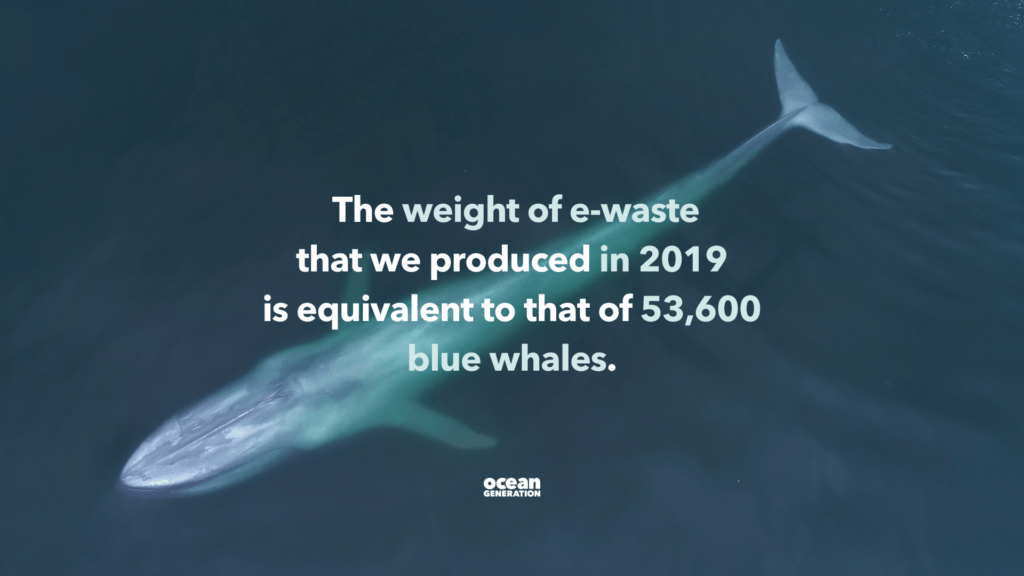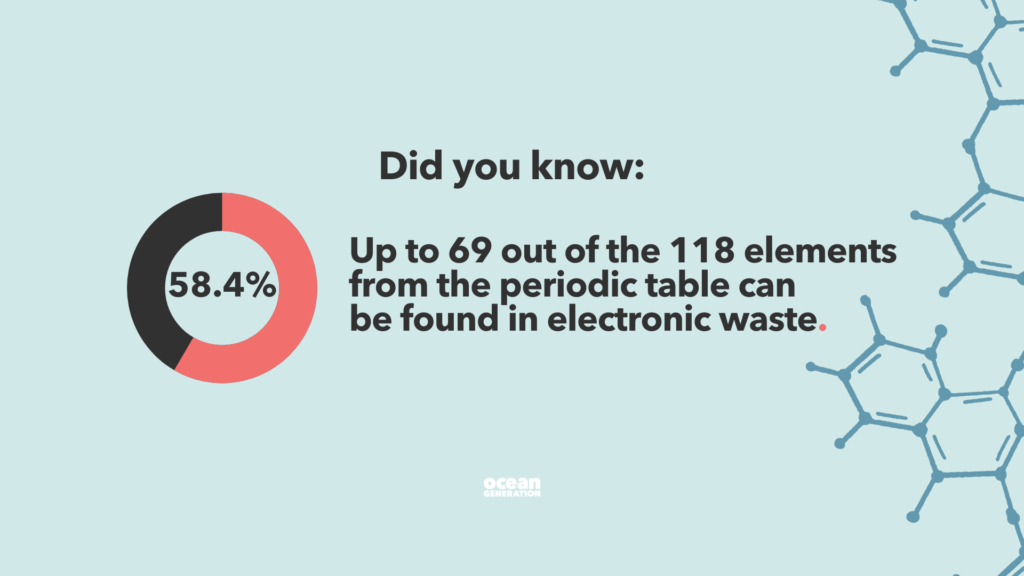- Our Future: Solutions
- Our Impact: Threats
The rise of e-waste and what we can do about it: What we purchase.

What you need to know about the environmental impact of e-waste.
Appliances are a marker of technological advancement and play a significant role in many of our lives. While they can be beneficial, it is important to consider the impact that these appliances, as e-waste, have on both people and the planet.
Imagine your typical day, what appliances do you use? Do you work using a laptop or browse social media on a phone? Maybe you use a washing machine to do your laundry? Or perhaps you listen to music using headphones or use a refrigerator to keep your food fresh?
Globally, the consumption of Electrical and Electronic Equipment (EEE) is rising by 2.5 million metric tons (Mt) each year (excluding solar electricity panels). This is due to higher disposable incomes, more people living in towns and cities, and further wide scale development of industries.

What is e-waste?
Despite increasing government influence over how discarded electronics (known as ‘e-waste’) is dealt with, and innovative e-waste recycling strategies, the sheer quantities and hazardous contents of e-waste remains a concern.
We will discuss three main areas of interest when it comes to the impact of appliances:
- Use of Natural Resources
- Creation of E-waste
- Impact of E-waste
What kind of materials can be found in appliances?
Many materials are used to build the appliances that we know and love.
From precious gold to hazardous mercury, up to 69 out of the 118 elements from the periodic table can be found in EEE.
Depleting these limited natural resources is an issue in and of itself, not to mention the greenhouse gas emissions associated with resource extraction which contribute to climate change.
The variety of materials in appliances also make it much more difficult to deal with e-waste, and we will return to this issue after discussing how e-waste is generated.
How is e-waste created?
What happens when appliances are no longer used?
Disposal of ‘obsolete’ appliances contribute to e-waste. This is one of the fastest growing solid waste streams in the world, with 53.6 Mt of e-waste generated globally in 2019 and expected growth to 74.7 Mt by 2030.
To put this into perspective, the weight of e-waste that we produced in 2019 is equivalent to that of 53,600 blue whales, with an expected increase to the weight of 74,700 blue whales in 2030.

What is causing growing quantities of e-waste?
You may have heard of the term ‘planned obsolescence’.
This refers to goods being produced with intentionally short useful lifespans, encouraging consumers to buy a replacement sooner than they should have to.
Planned obsolescence is one of the big contributors to the rise of e-waste, and examples can be found throughout the tech world, from the deliberate slowing down of smartphone processors to companies frequently creating new models to make old ones seem unfashionable.
This new ‘normal’ perception of appliances having short lifespans fuels unnecessary consumption.
What’s the environmental impact of e-waste?
But why does it matter that e-waste is on the rise? In short, e-waste is problematic because of low recycling rates, export to developing countries, and the environmental and human health risks associated with improper e-waste management.
Below is the fate of e-waste generation in numbers:

Many disposed appliances end up in landfill or incinerators in developed countries or are exported to developing countries.

The lack of e-waste recycling means more raw materials are extracted to meet the growing demand for electronic products.
Additionally, as seen with plastics and textiles, the export of e-waste to be dealt with by informal sectors (unregulated economic activities outside government control) in developing countries is a major issue.
Out of sight, out of mind? No longer.
Despite the efforts of the Basel Convention to restrict the transport of hazardous waste between countries, e-waste exporters often exploit loopholes, such as by labelling shipments as “charitable donations” or by claiming that the e-waste is “repairable”.
The consequence?
Informal sectors in developing countries are dumped with large quantities of e-waste. Low paid workers in unsafe conditions process this e-waste using rudimentary techniques including manual disassembly, open incineration and acid dipping. Their aim is to tap into the literal gold mine of valuable resources hidden amongst this waste.

However, while there are valuable materials to be retrieved, e-waste also contains many hazardous substances which endanger the environment and humans alike.
Pollution of soil, air, and water with flame retardants and heavy metals (such as lead, copper, and cadmium) negatively impacts a variety of organisms, including reptiles, fish, crustaceans, and birds.
Not only is wildlife impacted, but these dangerous substances also harm humans both through direct contact with workers and by making their way into the food and water that civilians consume.
For example, the levels of lead and cadmium in polished rice from an e-waste recycling area in Southeast China were found to be 2-4 times higher than what is considered safe. Drinking water in this area was also contaminated, containing levels of lead up to 8 times higher than the local drinking water standard.
So, what is being done to tackle the environmental impacts of e-waste?
While 71% of the world’s population was guided by some form of national policy, legislation, or regulation to govern e-waste in 2019, this equates to less than half the countries in the world.
This means that there is still much progress to be made until e-waste is sufficiently managed across the world.
Interestingly, valuable materials can be extracted from e-waste using bacteria and fungi, but these recycling techniques still have some way to go before they can be scaled up.
How can I become a conscious appliance consumer?
Having a responsible relationship with appliances is possible.
- Remember that a ‘want’ may differ from a ‘need’, so question whether you actually need that appliance before purchasing it.
- Refuse to purchase unnecessary or low-quality appliances where possible.
- When purchasing appliances, investigate refurbished items (products that are repaired/restored to working condition) or remanufactured items (used products that get dismantled, their worn parts replaced, and reassembled to like-new condition) before buying new.
- If your appliance breaks, consider repairing it yourself or booking a certified repair service.
- If your appliance is at the end of its lifespan, recycle it.




